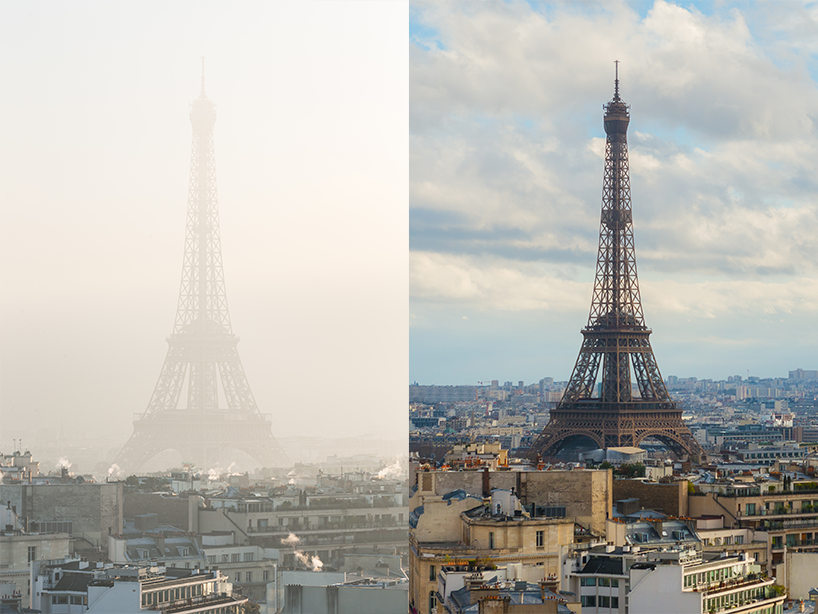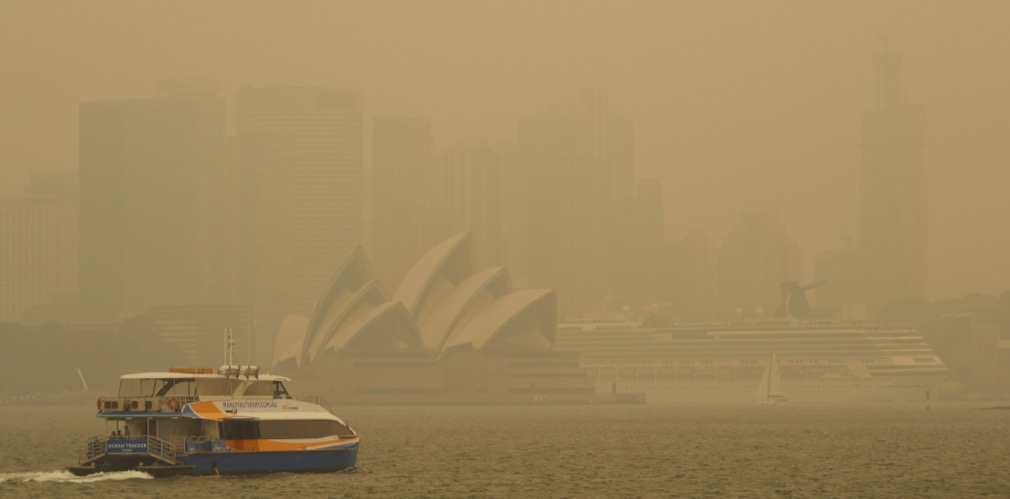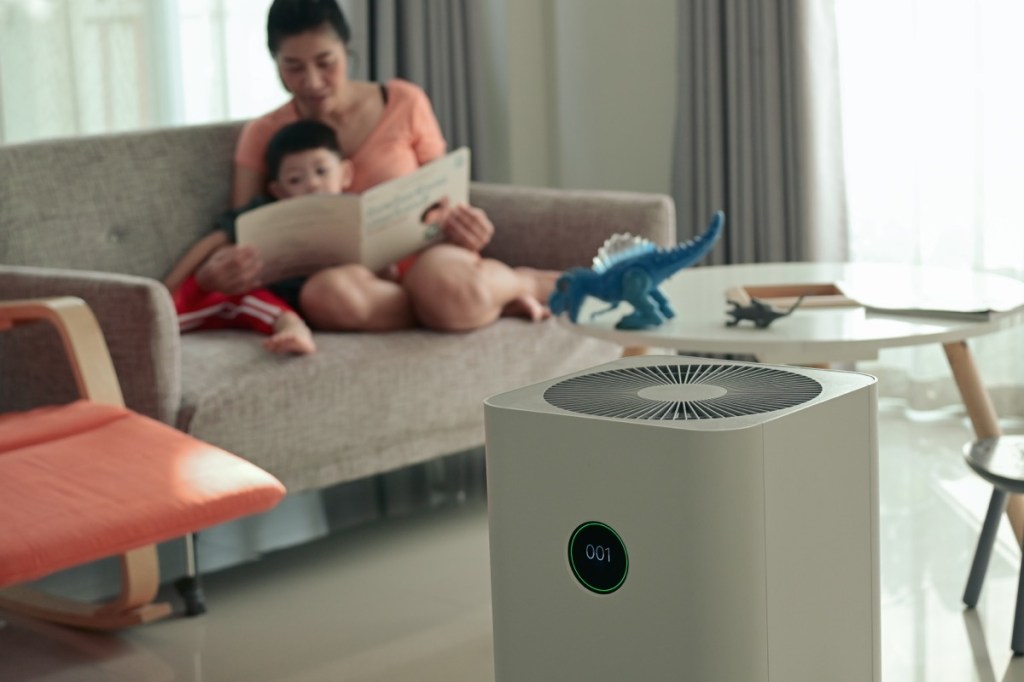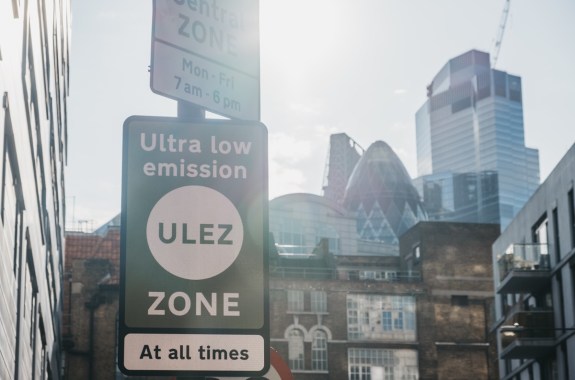Grade Level
6 - 8
minutes
1-2 Class Periods
subject
Environmental Science
Activity Type:
social studies, ELA, environmental science
Take a look at the below images and make some observations:

Reflect on the following questions:
- What do you see?
- What do both images have in common?
- What differences do you notice?
- What could cause Paris, France to have such wildly different air quality at these different points in time?
The photo on the right above shows Paris, France in December of 2016. That winter, Paris experienced its worst air quality in over 10 years. The air in Paris, or any other location, changes through time. Air quality is shaped by both human and natural activities that create air pollution, as well as by natural processes like wind and precipitation that move and clean air.
In this lesson, students will research how air pollution is generated and its impact on countries around the world. Students will collaborate with their peers to brainstorm creative solutions for a country of their choosing to fight air pollution and then create a Public Service Announcement (PSA) in which they will educate the citizens of their country how to reduce air pollution.
Air Pollution Moves Around The Planet
Watch the video below once without sound. What do you notice? What do you wonder? As you watch, record a few of your observations, and your questions.
Pause the video halfway through, and reflect on the following questions:
- What did you notice about the colors in the video? How did they move?
- What do you think the red represents? What about the yellow? The gray?
- What information can you find on the bottom of the screen to help you interpret the colors in this video?
Now, watch the video again (and turn on the sound if you’d like to learn from the creators of this video). This is a video of a computer model of carbon dioxide (CO2) and carbon monoxide (CO) in the atmosphere, created using real ground-based air quality data. As you watch the video a second time, notice where carbon monoxide (dark gray and white), and carbon dioxide (blue, green, yellow, orange, and red) occur and how they move.
- Where did we see a lot of carbon dioxide being produced? Did it stay there?
- What about carbon monoxide?
- What does this model suggest about air pollution? Do you think air pollution travels?
The air around us is made of mostly nitrogen (78%) and oxygen (21%), which is great stuff to breathe. But other gases and particles get mixed into our air too, some of which can be harmful to breathe and contribute to global climate change.
Carbon dioxide occurs naturally in Earth’s atmosphere—it is used by plants and algae for photosynthesis—and is what most non-photosynthesizing organisms (e.g. animals) breathe out as a byproduct of respiration. Carbon dioxide is also formed when organic material is burned. However, CO2 is also an important greenhouse gas: It traps energy and heat from the sun in our atmosphere like a greenhouse. The rise of atmospheric CO2, and the resulting warming due to the greenhouse effect, is the primary cause of global climate change.
Unlike carbon dioxide, carbon monoxide (CO) is considered an air pollutant. An air pollutant is any substance that enters the air and is harmful to breathe. Like carbon dioxide, carbon monoxide is also a greenhouse gas, but it differs from carbon dioxide in that it is a poisonous gas that is dangerous to breathe, particularly in high concentrations. That makes it an air pollutant.
There are many different kinds of air pollutants that can make the air unsafe to breathe. Though many can have natural causes, most air pollutants come from human activities such as burning fossil fuels, agriculture, or manufacturing. Common air pollutants include particulate matter, nitrogen oxides, sulfur oxides, ground level ozone, volatile organic compounds, lead, carbon monoxide, and chlorofluorocarbons. The amounts of these pollutants in the air can change from place to place and over time, driven by weather and human activities. Poor air quality caused by air pollution is associated with a number of human diseases, including asthma, heart attack, stroke, pneumonia, and cancer, which is why air pollution is an important public health concern around the world.
Air Quality Around The World

Now that you’ve learned a bit about how air quality is measured, you’ll look at the air quality for four different cities around the world, and your own hometown. You’ll use the US Air Quality Index as your main measure of air quality. Air Quality Index, or AQI, describes the air quality of an area by the health effects that someone breathing that air might experience after a few hours or days. AQI ratings describe the air quality in an area on a scale from “Good” to “Hazardous.” AQI scores take into account the ground-level ozone, particle pollution (also known as particulate matter), carbon monoxide, sulfur dioxide, and nitrogen dioxide in the air.
Your assignment:
- Determine the Air Quality Index of four cities outside of the United States and compare them to the air quality in a U.S. city near you using the IQAir website and AirNow.
- Select one of the cities you researched in Step 1, and determine the most common air pollutants there, as well the sources of those pollutants. You can use any of the following websites to help you in your search:
– Statista Emissions Summary
– European Environmental Agency Country Fact Sheets
– Air Quality Index (AQI) Basics – Air Now
– What is the Daily Air Quality Index?
– A Guide to Air Quality and Your Health – AQI - Organize your notes and observations–you’ll use this research to help you create a public service announcement for the country you’ve chosen!
Create An Air Quality Public Service Announcement
A Public Service Announcement is a short educational device used to educate citizens about topics. These can be in print media- like posters and infographics or tv and radio ads.
You are going to create a Public Service Announcement (PSA) that your chosen country could use to educate their population about the air pollution issues that matter to them.
A great PSA passes along a lot of information in a short period of time, is interesting, and is relevant to the community it hopes to inform. The PSA you create will focus on educating the public about how air pollution affects your country as well as providing ideas for ways individuals can stay safe from pollution, and help reduce the air pollutants that cause it locally.

Remember, your job is to educate and inspire people in a short period of time–ideally in just 30 seconds to one minute. Public service announcements can be made for almost anywhere that people will find them: as posters or billboards, in a radio television advertisement, in a social media post or on a bus stop. Get creative! Here are some examples:
Credits:
Lesson design: Amanda Winter, Teressa Smith
Copywriting, production: Ariel Zych
Meet the Writers
About Amanda Winter
Amanda Winter teaches 6th-grade Social Studies in the STEAM program at Richmond Hills Middle School in Savannah, Georgia. Prior to Social studies, I taught middle school science for 6 years. I am enjoying finding connections between the two subjects to create meaningful learning opportunities for students. Terressa Smith is a second career teacher who has over 20 years classroom experience teaching science, social studies, math, and healthcare sciences. She incorporates the experiences of her multiple years in the classroom and degree in history to create engaging and constantly changing social studies lessons for her students.
About Teressa Smith
Teressa Smith is a second career teacher who has over 20 years of classroom experience teaching science, social studies, math, and healthcare sciences. She incorporates the experiences of her multiple years in the classroom and degree in history to create engaging and constantly changing social studies lessons for her students.
